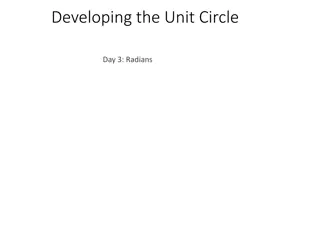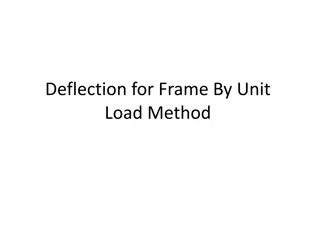
Understanding International Trade and Economics
Explore the concepts of trade balance, motivation to trade, absolute vs. comparative advantage, terms of trade, tariffs vs. quotas, and exchange rates. Learn how trade affects economies globally and the importance of efficient resource allocation for mutual gains.
Download Presentation

Please find below an Image/Link to download the presentation.
The content on the website is provided AS IS for your information and personal use only. It may not be sold, licensed, or shared on other websites without obtaining consent from the author. If you encounter any issues during the download, it is possible that the publisher has removed the file from their server.
You are allowed to download the files provided on this website for personal or commercial use, subject to the condition that they are used lawfully. All files are the property of their respective owners.
The content on the website is provided AS IS for your information and personal use only. It may not be sold, licensed, or shared on other websites without obtaining consent from the author.
E N D
Presentation Transcript
Unit 8 Danny, Kyler, Claire
Trade Trade Balance=Exports-Imports Trade Deficit= Imports exceed exports Trade Surplus= Exports Exceed Imports
Motivation to Trade Resources aren't distributed evenly More efficient because countries have specific skills Without trade there would be too many small industries Specialization permits larger outputs for countries Allows for mutual gains for both countries involved in trade
Absolute vs. Comparative Advantage Absolute Advantage Producing a particular good using a smaller quantity of resources than another country Comparative Advantage The ability of a country to produce a specific good at a lower opportunity cost than its trading partners
Example of Absolute vs. Comparative Assume the U.S and France both have 100 workers and they split their workforce evenly between wine and bread (50 workers for each product). Bread Wine U.S. (50/50) 5,000 2,500 France(50/50) 750 3,000 Total 5,750 5,500 Now assume that the U.S. Moves 10 workers toward the production of bread, and France moves 10 workers towards the production of wine. Bread 6,000 600 6,600 Wine 4,000 3,600 7,600 U.S.(60/40) France (40/60) Total
Terms of Trade Terms of Trade= The rate at which goods are exchanged Limits of trade= A country will not trade unless the terms of trade are favorable for that country Gains from trade= World output will increase because both countries will move their resources towards the product they have comparative advantage in
Tariffs vs. Quotas Tariffs Quotas Taxes on imports A limit on the quantity of a good that can be imported within a given period Benefits domestic industries and the government Benefits domestic firms Hurts consumers and other countries Hurts consumers and foreign producers Both result in one sided results because... Price in importing country goes up Price in exporting country goes down Overall world trade goes down
Exchange Rates Exchange Rate- The price of one country's currency in terms of another Demand for a countries currency comes from Foreign demand for their goods and services Foreign demand for their capital Foreign demand for their investment Supply of a currency comes from the desire to purchase foreign products, capital, or financial assets
Appreciation vs. Depreciation Appreciation Depreciation When a currency can buy more of another currency When a currency can buy less of another currency The price of a currency, in terms of another, increases The price of a currency, in terms of another, decreases
Short Run Relative interest rates (i i) Price of Rupees in terms of Euros Price of Euros in terms of Rupees Euros Rupees S S1 S2 Pe2 Pe1 Pe1 Pe2 D2 Quantity of Rupees D D1 Quantity of Euros Qe1 Qe2 Qe2 Qe1 Rupees are appreciating relative to the Euro because of higher interest rates Euros are depreciating relative to the Rupee because of lower interest rates
Medium Run Price of Euros in terms of Rupees RGDP Euros Rupees Price of Rupees in terms of Euros S S1 S2 Pe2 Pe1 Pe1 Pe2 D2 Quantity of Rupees D D1 Quantity of Euros Qe1 Qe2 Qe2 Qe1 Rupees are appreciating relative to the Euro because India is exporting more to Spain Euros are depreciating relative to the Rupee because Spain's economy is growing so they are importing more from India
Long Run Price of Euros in terms of Rupees Inflation Rates Price of Rupees in terms of Euros Pe2 Euros Rupees S1 S S2 Pe1 Pe1 Pe2 D2 Quantity of Euros D D1 Quantity of Rupees Qe1 Qe2 Qe2 Qe1 Rupees are appreciating relative to Euros because they have a higher inflation rate Euros are depreciating relative to Rupees because they have lower inflation rate
The Balance of Payments Current Account A summary of a countries international economic transactions in a given period of time. Trade Balance = Exports - Imports Income from foreign investments Financial Account An accounting statement of all inte rnational money flows in a given time period. Financial Assets bought and sold across U.S. Borders Calculated as foreign purchase of U.S. Financia l assets
Supply and Demand Curve of Money In order for a currency's market to be in equilibrium, the supply of a currency must be equal to the demand for a currency. When we buy from foreigners, money flowing out = supply When foreigners buy from us, money flowing in = demand All the money flowing out (supply) must be equal to the money flowing in(demand).
U.S. Current & Financial Account Balances Current Account Financial Account The biggest part of the Current Account is the trade balance There is more foreign investment in the U.S. than American Investment abroad U.S. Exports < U.S. Imports More dollars flowing in than flowing out through the Financial Account We have a trade deficit More dollars flowing out than flowing in We have a Financial Account surplus We have a Current Account Deficit






















